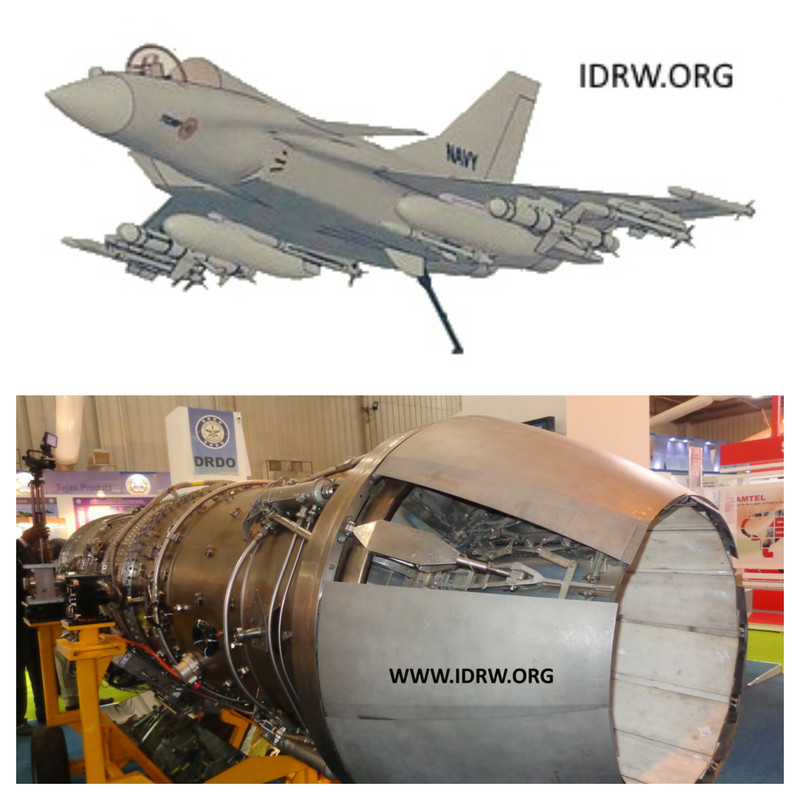SOURCE: AFI

India’s Kaveri engine program, which has long been the backbone of the country’s indigenous fighter jet propulsion ambitions, has yet to reach the level of operational readiness required for deployment in frontline fighter aircraft. However, recent discussions have emerged about the Twin Engine Deck-Based Fighter (TEDBF) being an ideal platform to test and develop the Kaveri engine, given its unique technical specifications and strategic importance for India’s naval aviation future.
The TEDBF, a multi-role carrier-based fighter aircraft being developed by Hindustan Aeronautics Limited (HAL) and the Aeronautical Development Agency (ADA), is set to replace the Indian Navy’s aging fleet of MiG-29K fighters. It offers a twin-engine configuration, which presents an ideal opportunity to integrate and test the indigenous Kaveri engine alongside a more proven powerplant like the General Electric F414 engine. This combination can provide the Indian aerospace industry a reliable and secure flying testbed for further refining the Kaveri engine, leading it toward eventual operational deployment.
Why TEDBF Could Be the Ideal Testbed
1. Twin-Engine Configuration: One of the most significant advantages of using the TEDBF for the Kaveri engine program is its twin-engine configuration. This would allow one engine to be replaced with a Kaveri while the other remains a proven and trusted engine like the F414. This setup provides a layer of safety during flight testing since one engine (the F414) can handle the primary flight tasks while the Kaveri is tested under real flight conditions. This minimizes the risk to the aircraft and crew, while allowing detailed assessments of the Kaveri’s performance in real-time scenarios.
2. Naval Flight Dynamics: As a carrier-based fighter, the TEDBF must undergo rigorous testing for high-thrust and extreme operational conditions, including catapult launches and arrested landings on aircraft carriers. Testing the Kaveri in such high-stress scenarios would provide critical data that cannot be replicated in standard ground-based or low-intensity flight tests. This data is essential for finalizing the Kaveri engine’s reliability and durability under diverse operating conditions.
3. Technology Synergy: The TEDBF shares design and technological lineage with India’s Tejas Mk2 and Advanced Medium Combat Aircraft (AMCA), which means lessons learned from testing the Kaveri engine on the TEDBF could be applied to these other platforms. This cross-platform synergy would accelerate the Kaveri’s integration across different Indian fighter platforms, helping the engine meet the varying needs of different branches of the Indian Armed Forces.
Understanding the compatibility of the Kaveri engine with the TEDBF platform requires a comparison with the F414 engine, the current preferred choice for TEDBF’s powerplant. This comparison sheds light on the physical and technical feasibility of integrating the Kaveri into the TEDBF.

Length and Diameter: The Kaveri engine, at 3.43 meters in length, is slightly shorter than the F414, which measures 3.91 meters. However, the Kaveri is slightly larger in diameter (0.99 meters compared to 0.89 meters). This dimensional similarity suggests that the Kaveri could physically fit within the TEDBF’s engine bays with some minor modifications.
Weight: The Kaveri engine is heavier, weighing 1,260 kg compared to the F414’s 1,060 kg. This difference could pose some challenges for flight dynamics, especially during high-performance maneuvers. However, considering that TEDBF is designed as a twin-engine aircraft, the weight difference can be managed and optimized during flight tests.
Thrust Output: While the Kaveri generates slightly less thrust (85 kN) compared to the F414 (97.9 kN), the twin-engine TEDBF would allow for supplementary thrust from the second engine, compensating for any shortfall during tests. This provides a safety net while optimizing the Kaveri’s performance in the air.
Advantages of Testing Kaveri on TEDBF
1. Data Gathering for Optimization: The TEDBF’s demanding flight regime, especially in carrier operations, will allow engineers to gather critical data on the Kaveri’s performance across various stages of flight, including takeoff, cruising, and landing. This data is vital for further refining the engine’s thrust capabilities, fuel efficiency, and overall reliability.
2. Real-World Operational Testing: Unlike ground testbeds or smaller platforms, the TEDBF provides real-world conditions where the Kaveri’s performance can be fully tested in diverse operational scenarios. These include carrier landings, deck operations, and extended maritime patrol missions—all critical for naval fighters.
3. Safety and Redundancy: The twin-engine setup reduces risk, as the proven F414 can handle flight operations while the Kaveri is tested. This redundancy ensures that flight testing is conducted with lower risk, making it easier to gather high-quality performance data.
4. Potential Future Upgrades: If the Kaveri successfully passes its testing phases, it could eventually be optimized to match or even exceed the performance of its global counterparts like the F414. This would give India full control over the engine supply chain, reducing the need for foreign procurements.